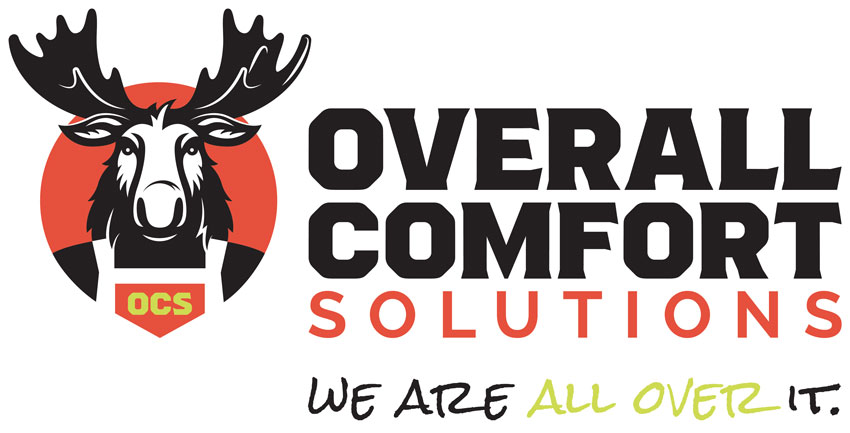Upgrade to a Smart Thermostat
in Southern Illinois Homes
Thermostat Installations and Upgrades
Your thermostat controls more than just temperature; it manages your home’s comfort, energy efficiency, and monthly utility costs throughout Southern Illinois’s variable seasons. From basic programmable units to advanced smart thermostats with learning capabilities, modern temperature control technology offers Marion, Herrin, and Carbondale homeowners unprecedented control over their heating and cooling systems. Whether you’re upgrading an old round Honeywell dial or replacing a basic digital unit, choosing the right thermostat can reduce energy costs by 10-20% while dramatically improving comfort consistency year-round.
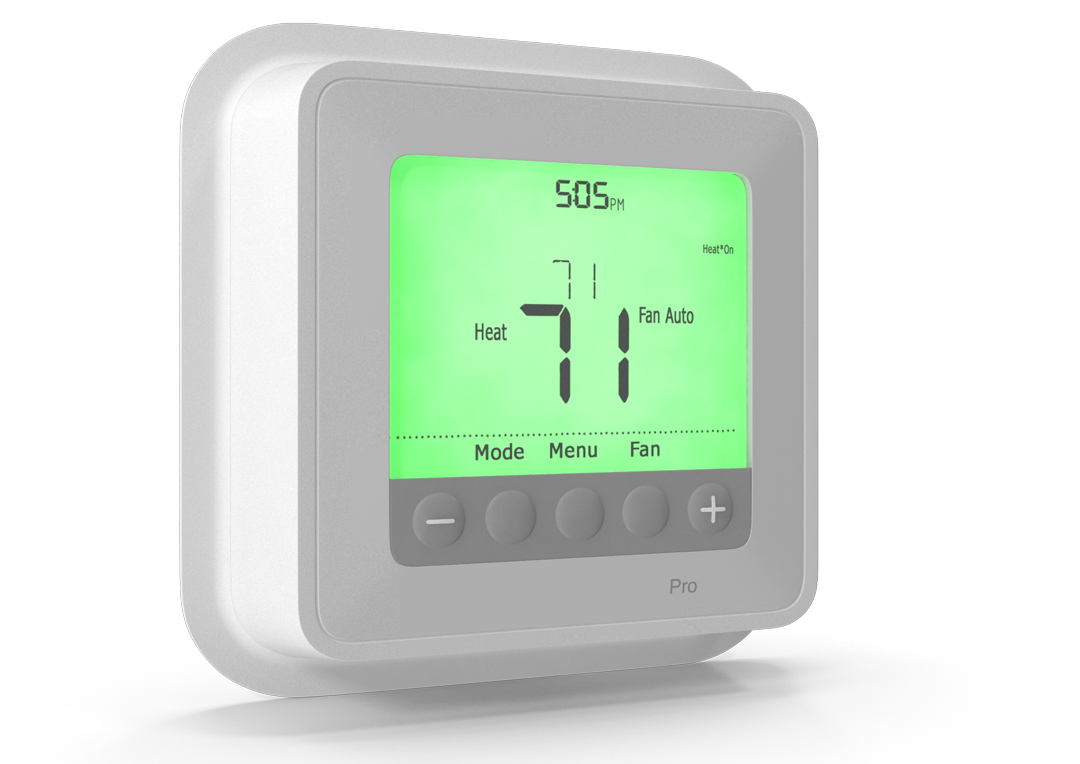

Smart Thermostats: Advanced Control for Modern Living
Smart thermostats revolutionize home temperature control through Wi-Fi connectivity, learning algorithms, and smartphone integration that adapts to your lifestyle automatically. These sophisticated devices monitor your schedule, track energy usage, and adjust heating and cooling patterns to optimize comfort while minimizing energy waste throughout Southern Illinois’s varying seasonal conditions.
Learning capabilities distinguish premium smart thermostats from basic programmable units. Advanced models like the Nest Learning Thermostat and Ecobee SmartThermostat study your temperature preferences, occupancy patterns, and daily routines to create automatic schedules that maintain optimal comfort without manual programming.
This technology particularly benefits busy families in Williamson County whose schedules vary frequently.
Remote access through smartphone apps allows temperature control from anywhere, making smart thermostats perfect for homeowners with irregular schedules or frequent travel. You can adjust temperatures before arriving home, monitor energy usage while away, and receive alerts about system problems that need attention before they become costly repairs.
Geofencing technology automatically adjusts temperatures based on your location, reducing energy waste when nobody’s home while ensuring comfort upon your return. This feature works exceptionally well for Southern Illinois homeowners who commute to St. Louis or travel frequently for work, providing automatic energy savings without sacrificing comfort.
Energy reporting features provide detailed insights into heating and cooling patterns, helping homeowners identify opportunities for additional savings. These reports show how weather conditions, schedule changes, and thermostat adjustments affect energy consumption, enabling informed decisions about comfort settings and system operation.
Voice control integration with Amazon Alexa, Google Assistant, and Apple HomeKit allows hands-free temperature adjustments that integrate seamlessly with smart home ecosystems. This convenience appeals to tech-savvy homeowners throughout Marion and Herrin who appreciate centralized control of home automation systems.
Programmable Thermostats: Proven Efficiency at Moderate Cost
Programmable thermostats provide automatic temperature scheduling without the complexity or cost of smart thermostat technology. These reliable units allow multiple daily temperature changes that align with work schedules, sleep patterns, and occupancy routines common to Southern Illinois households.
7-day programming flexibility accommodates varying weekday and weekend schedules that many families maintain. You can set different temperatures for morning warm-up, daytime energy saving while at work, evening comfort, and overnight sleeping temperatures that optimize energy use while maintaining comfort throughout different daily periods.

Multi-stage system compatibility ensures programmable thermostats work effectively with furnaces, heat pumps, and dual-fuel systems common throughout Williamson County homes. Advanced programmable units include features like adaptive recovery that begins heating or cooling early to reach desired temperatures at scheduled times rather than starting temperature changes at programmed times.
Battery backup maintains programmed schedules during power outages, preventing the schedule loss that frustrated homeowners with older thermostat technology. This feature provides peace of mind during Southern Illinois storms that occasionally interrupt electrical service without losing carefully programmed energy-saving schedules.
Large display screens and intuitive controls make programmable thermostats user-friendly for homeowners who prefer straightforward operation without smartphone connectivity or learning algorithms. Clear temperature displays and simple programming menus appeal to homeowners who want automatic temperature control without technological complexity.
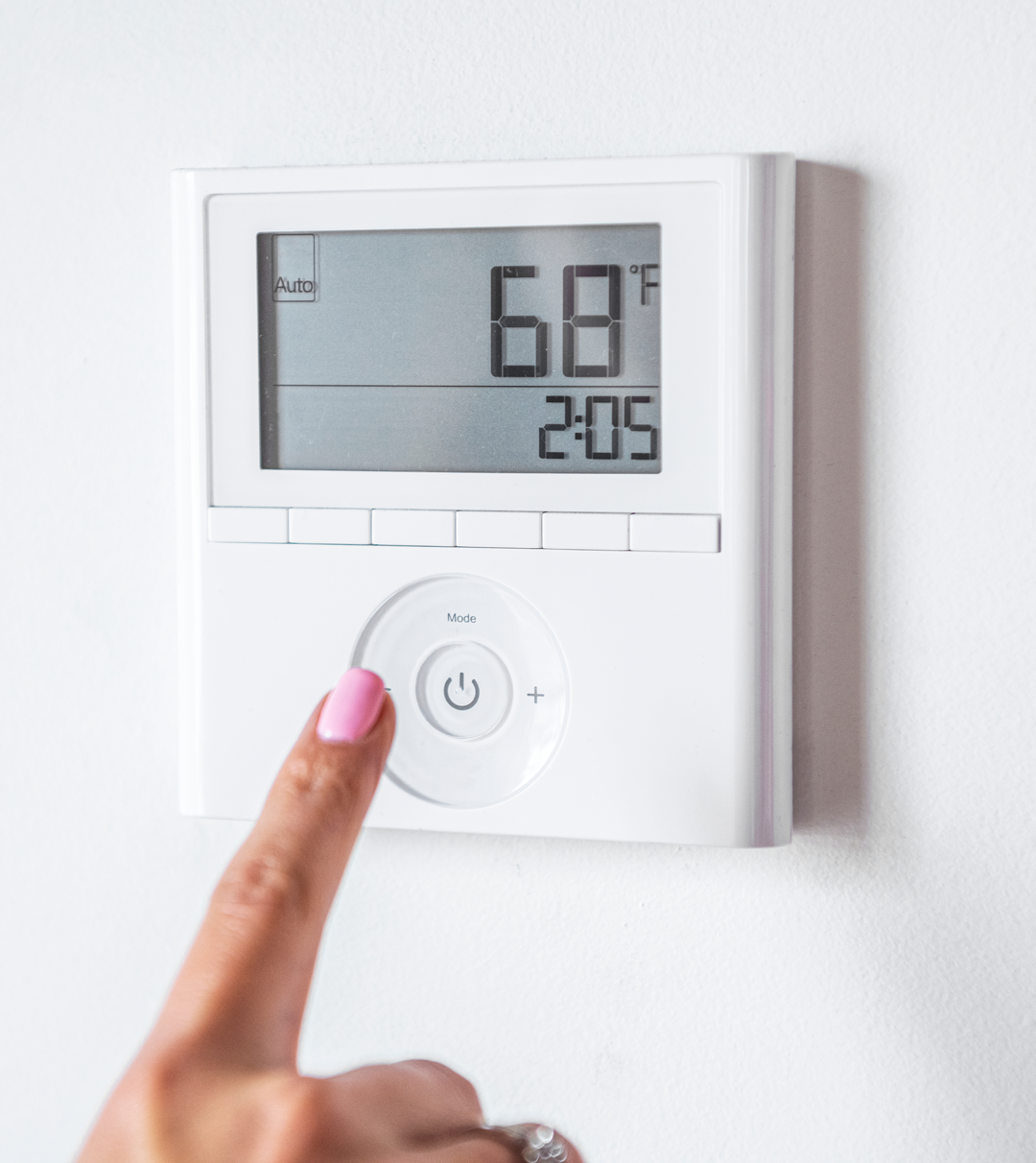
Basic Thermostats: Simple, Reliable Temperature Control
Manual thermostats continue serving homes where simple, dependable temperature control meets basic comfort needs without programmable features or automatic scheduling. These units provide reliable operation at minimal cost, making them practical for rental properties, vacation homes, or situations where advanced features aren’t necessary.
Round dial thermostats like the classic Honeywell models offer mechanical reliability that operates without electrical power, making them suitable for older homes or applications where power interruptions might affect digital units. While lacking programming capability, these thermostats provide accurate temperature control with mechanical precision that many homeowners appreciate.
Digital display thermostats with manual operation provide temperature readouts and basic features like simple scheduling without smart connectivity. These units bridge the gap between mechanical and programmable thermostats, offering improved accuracy and easier temperature reading while maintaining straightforward operation.
Heat pump compatibility requires specific thermostat features that prevent inefficient electric backup heating during normal temperature adjustments. Basic thermostats designed for heat pump applications include staging controls that optimize system operation without the complexity of smart or advanced programmable features.
Replacement simplicity makes basic thermostats attractive for emergency replacements or temporary solutions while planning system upgrades. Most basic units install quickly without reprogramming or setup procedures, providing immediate temperature control when existing thermostats fail during peak heating or cooling seasons.
Thermostat Features for Southern Illinois Climate Needs
Humidity control capabilities become valuable during Southern Illinois’s humid summers when managing moisture levels improves comfort while reducing cooling costs. Advanced thermostats with humidity sensors can control whole-house dehumidifiers or adjust cooling operation to maintain optimal indoor humidity levels between 30-50% year-round.
Multi-stage system control ensures thermostats operate efficiently with two-stage furnaces, heat pumps, and dual-fuel systems common in modern Williamson County homes. Proper staging prevents unnecessary backup heating activation and optimizes equipment operation for maximum efficiency during varying weather conditions.
Filter change reminders help homeowners maintain system efficiency through timely air filter replacement that improves indoor air quality while preventing equipment problems. These alerts become particularly valuable during Southern Illinois’s high pollen seasons when filters require more frequent attention to maintain optimal airflow.
Weather-based adjustments available in smart thermostats modify heating and cooling operation based on local weather forecasts, pre-cooling homes before hot afternoons or adjusting heating schedules when overnight temperatures drop unexpectedly.
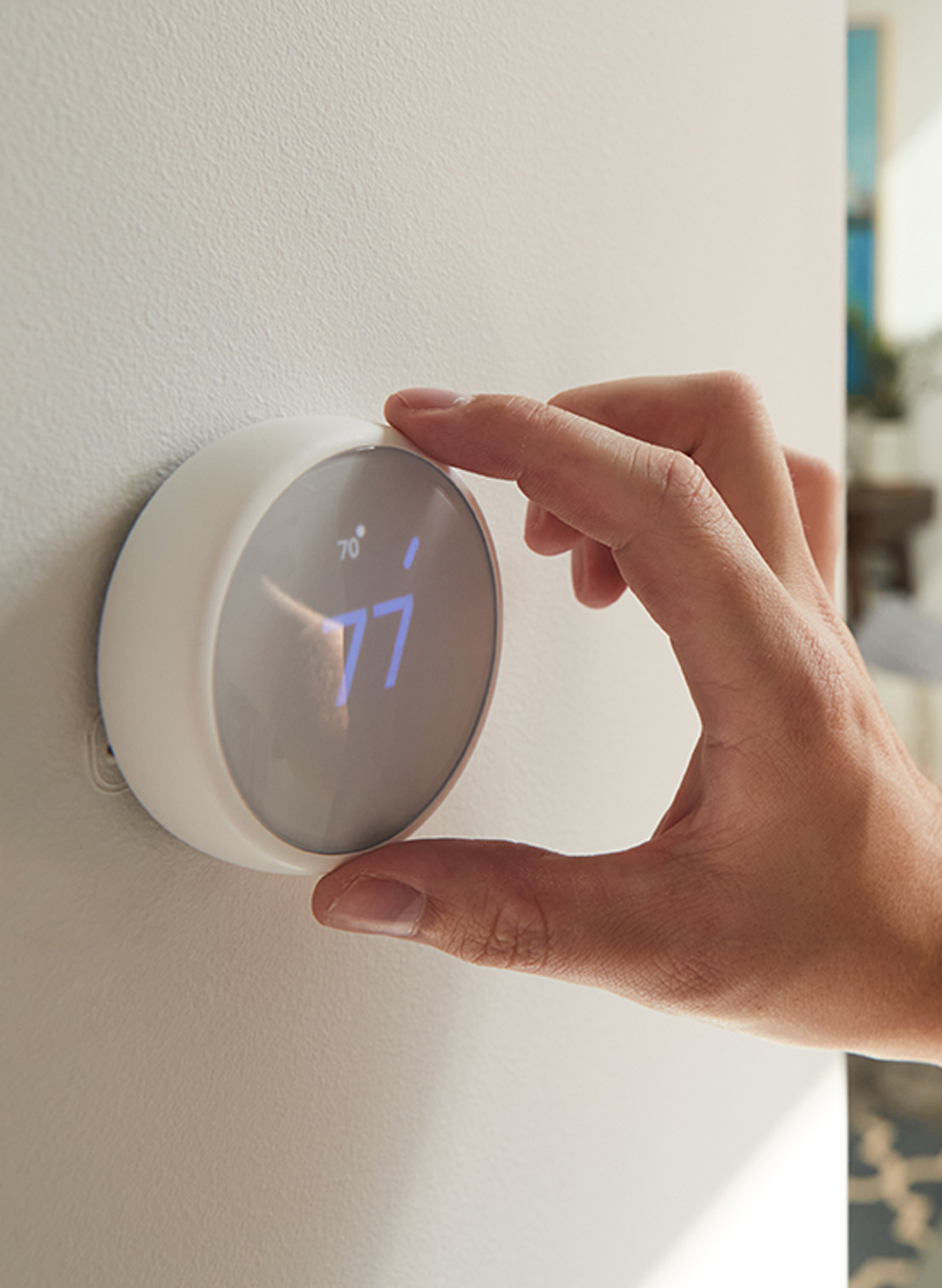
This proactive approach optimizes comfort while minimizing energy consumption during weather transitions.
Zoning system compatibility allows advanced thermostats to control multiple heating and cooling zones independently, providing customized comfort for different areas of larger homes. This capability works well for multi-level homes throughout Marion and Herrin where sun exposure and usage patterns create different temperature needs between zones.
Emergency heat controls provide manual override capabilities for heat pump systems during equipment problems or extreme cold weather that requires backup heating activation. Proper emergency heat operation protects equipment while maintaining heating capability when primary systems need service attention.
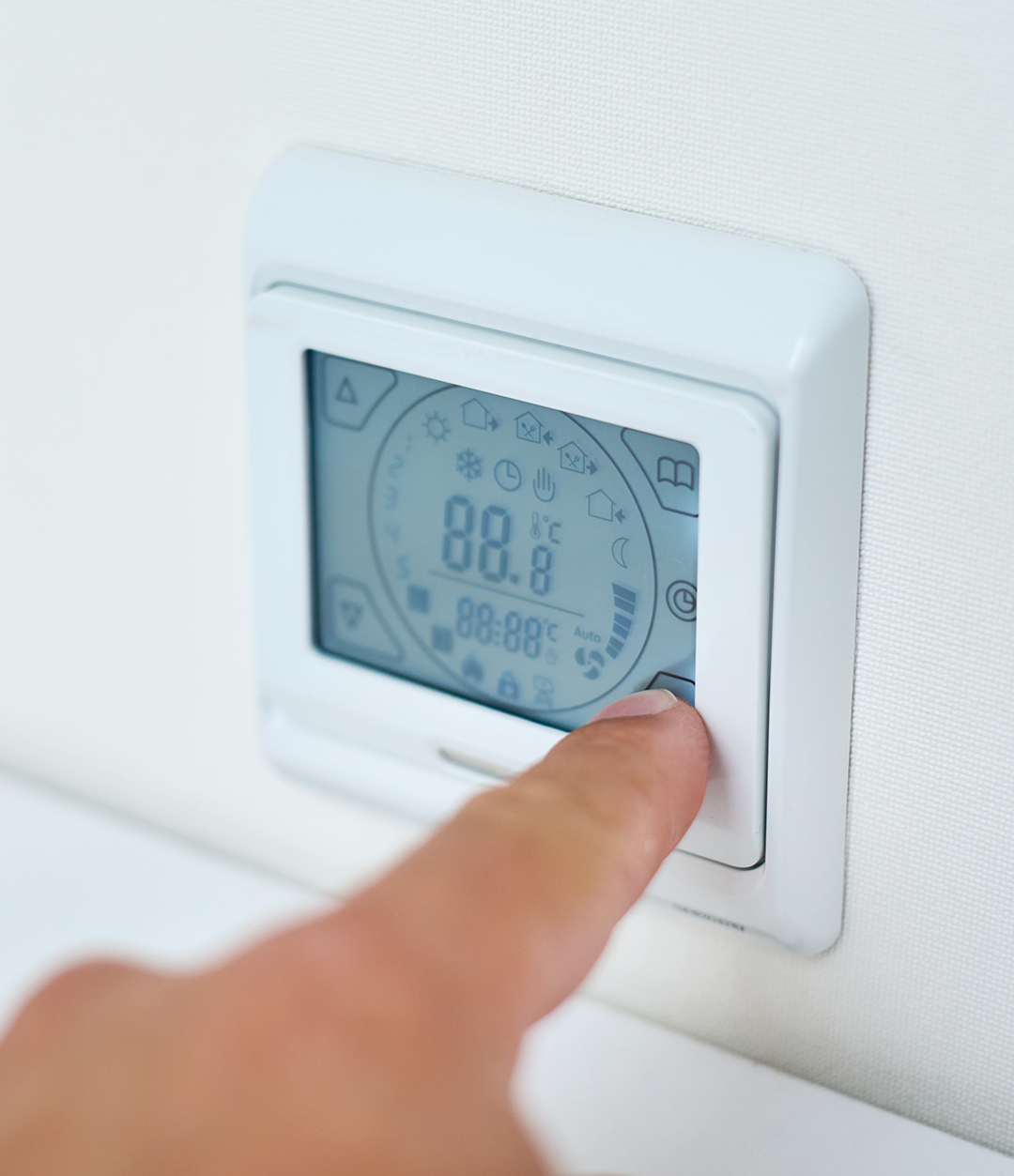
Installation Considerations and Compatibility Requirements
HVAC system compatibility determines which thermostat features work with your specific heating and cooling equipment. Gas furnaces, heat pumps, dual-fuel systems, and multi-stage equipment require different thermostat capabilities, making professional assessment important for optimal performance and efficiency.
Wiring requirements vary significantly between basic and advanced thermostats, with smart units often needing additional wires for power and advanced features. Many Southern Illinois homes built before 1990 have basic thermostat wiring that may need updates to support smart thermostat installation and operation.
C-wire (common wire) availability becomes critical for smart thermostat installation because these units require continuous power for Wi-Fi connectivity and advanced features. Homes without C-wire access may need professional wiring updates or adapter installation to support smart thermostat operation reliably.
Wi-Fi network strength affects smart thermostat performance, particularly in larger homes or properties with Wi-Fi coverage gaps near thermostat locations. Professional installation includes network connectivity testing to ensure reliable operation and consistent smartphone app access for remote control features.
Professional installation ensures proper thermostat setup, system compatibility verification, and feature programming that maximizes energy savings and comfort benefits. Complex systems or smart thermostat installations often benefit from professional service that includes system testing and user training for optimal operation.
Permit requirements for thermostat replacement typically don’t apply to direct replacements, though system upgrades or wiring modifications may require electrical permits. Professional installers understand local code requirements and handle necessary permits for installations that involve electrical system modifications.
Choosing the Right Thermostat for Your Home and Budget
Usage patterns influence thermostat selection as much as budget considerations. Families with consistent schedules benefit from programmable thermostats, while households with varying routines or frequent travel find smart thermostats’ adaptive learning and remote access features worth the additional investment.
Home size and system complexity affect thermostat requirements, with larger homes or multi-zone systems needing advanced features for optimal control. Single-zone ranch homes throughout Carterville may operate efficiently with basic programmable units, while multi-level homes in Marion benefit from smart thermostats with zoning capabilities.
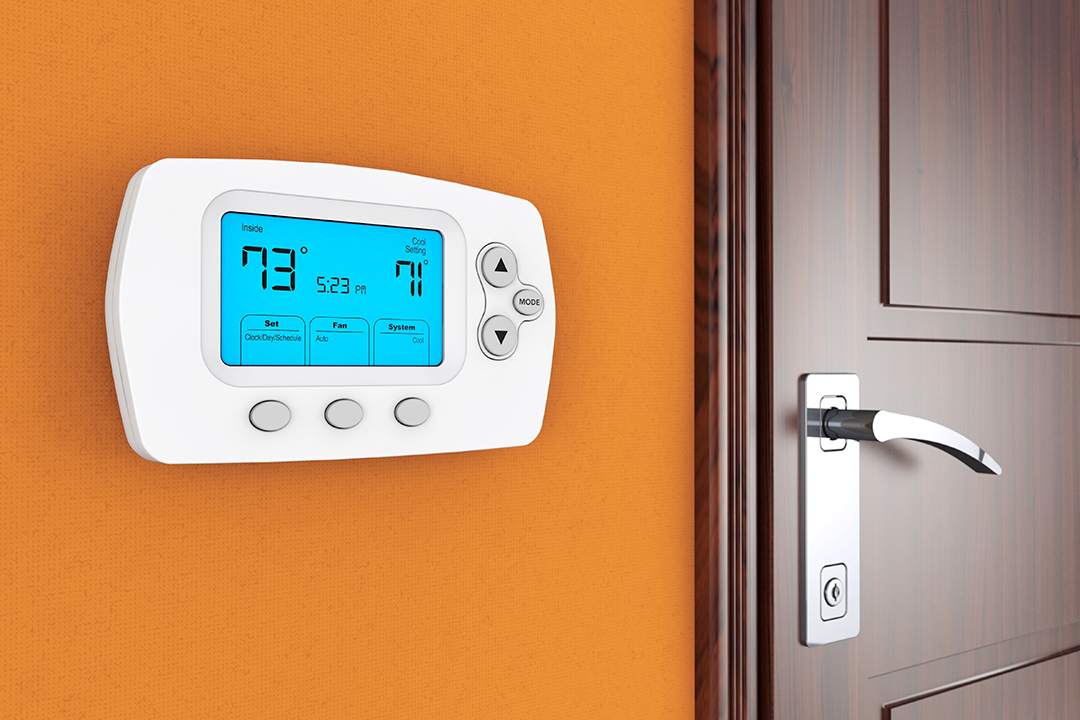
Budget considerations include both equipment costs and potential energy savings over time. Basic programmable thermostats cost $100-200 installed, while smart thermostats range from $250-500 installed. Energy savings of 10-20% often justify smart thermostat costs within 2-3 years for most Southern Illinois homes.
Technology comfort levels determine which thermostat features provide value versus frustration. Homeowners comfortable with smartphone apps and automated features appreciate smart thermostat capabilities, while those preferring straightforward operation find programmable or basic digital units more suitable for their preferences.
Future expansion possibilities matter for homeowners planning system upgrades or smart home integration. Choosing thermostats with advanced capabilities provides flexibility for future improvements like zoning systems, smart home integration, or equipment upgrades that benefit from sophisticated temperature control.
Professional consultation helps identify thermostat features that match your specific heating and cooling system, comfort preferences, and technology expectations. Overall Comfort Solutions evaluates your home’s requirements, existing equipment, and usage patterns to recommend thermostat solutions that provide optimal performance, efficiency, and value for Southern Illinois conditions.
Contact us today to explore how modern thermostat technology can improve your home’s comfort, reduce energy costs, and provide convenient control features that enhance your daily living experience throughout our region’s varying seasonal demands.
Top 5 Thermostat FAQs for Southern Illinois Homeowners
How much money can a smart thermostat save on my energy bills?
Smart thermostats typically reduce heating and cooling costs by 10-20% through automatic scheduling, learning algorithms, and remote access features. For average Southern Illinois homes spending $1,200-1,800 annually on heating and cooling, this translates to savings of $120-360 per year. The investment in a smart thermostat often pays for itself within 2-3 years through energy savings alone, while providing improved comfort and convenience throughout Marion, Herrin, and Carbondale area homes.
Do I need professional installation for my new thermostat?
Professional installation is recommended for smart thermostats and required when electrical wiring needs updates. Many Southern Illinois homes built before 1990 lack the C-wire (common wire) that smart thermostats need for continuous power and Wi-Fi connectivity. Professional installers can add necessary wiring, ensure proper system compatibility, and program advanced features correctly. Basic programmable thermostat replacement often works as a DIY project if existing wiring matches the new unit’s requirements.
Will a smart thermostat work with my existing heating and cooling system?
Most smart thermostats work with standard heating and cooling systems including gas furnaces, heat pumps, central air conditioning, and dual-fuel systems common throughout Williamson County homes. However, some older systems, electric baseboard heating, or specialty equipment may require specific thermostat models or professional assessment for compatibility. Heat pump systems need thermostats with proper staging controls to prevent inefficient backup heating activation during normal operation.
What’s the difference between programmable and smart thermostats?
Programmable thermostats require manual schedule programming and operate independently, while smart thermostats learn your preferences automatically and connect to Wi-Fi for remote control via smartphone apps. Smart thermostats adapt to your routine changes, provide energy usage reports, and offer features like geofencing that automatically adjusts temperatures when you leave or return home. Programmable units cost less initially but require more manual management to achieve energy savings.
How long do thermostats typically last before needing replacement?
Quality thermostats typically last 10-15 years with proper operation, though smart thermostats may have shorter lifespans due to their electronic complexity and software updates. Basic mechanical and programmable thermostats often operate reliably for 15-20 years. Signs your thermostat needs replacement include inaccurate temperature readings, unresponsive controls, short cycling of your heating or cooling system, or inability to maintain programmed schedules. Professional evaluation can determine if problems stem from the thermostat or other system components.
